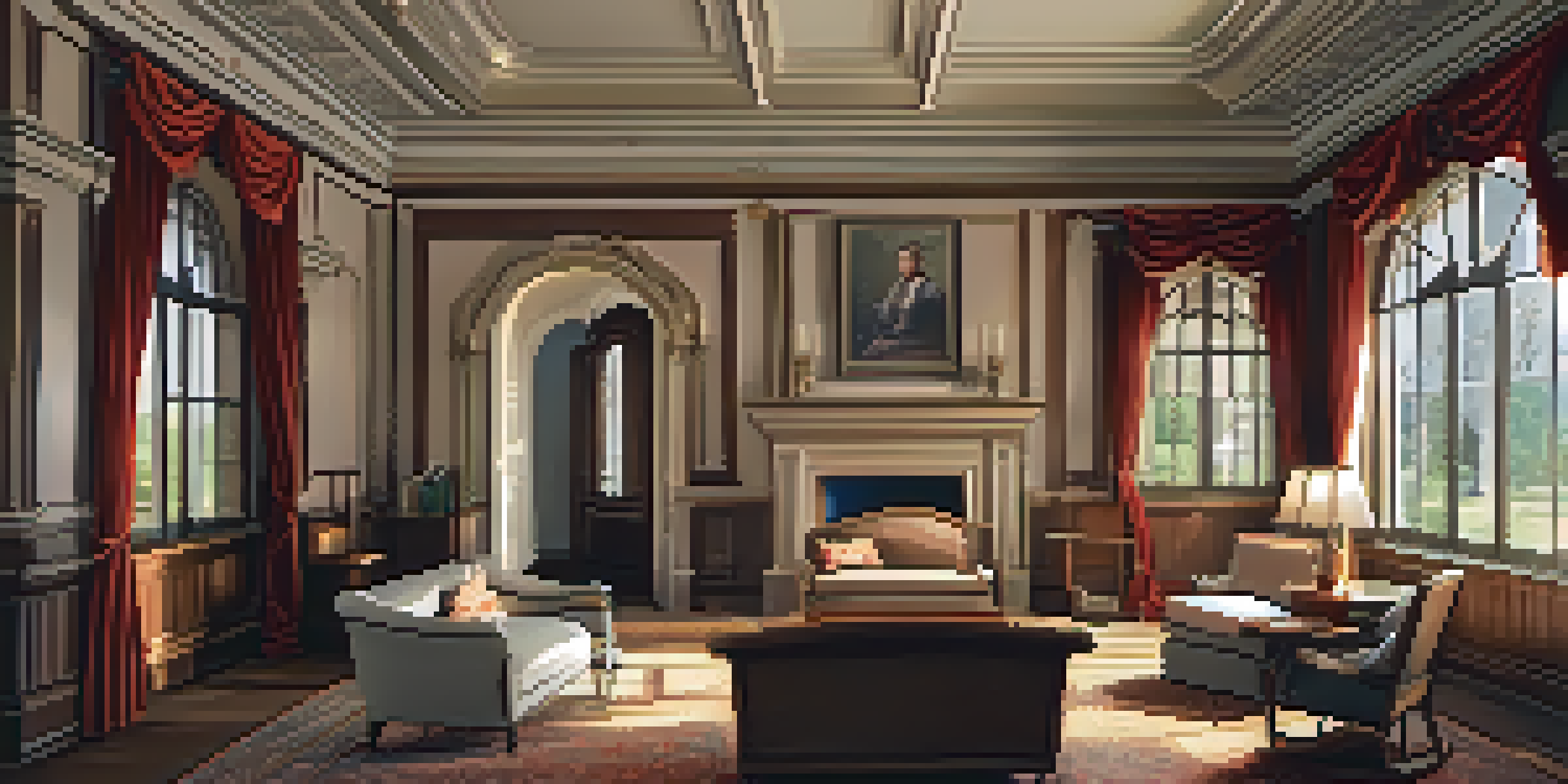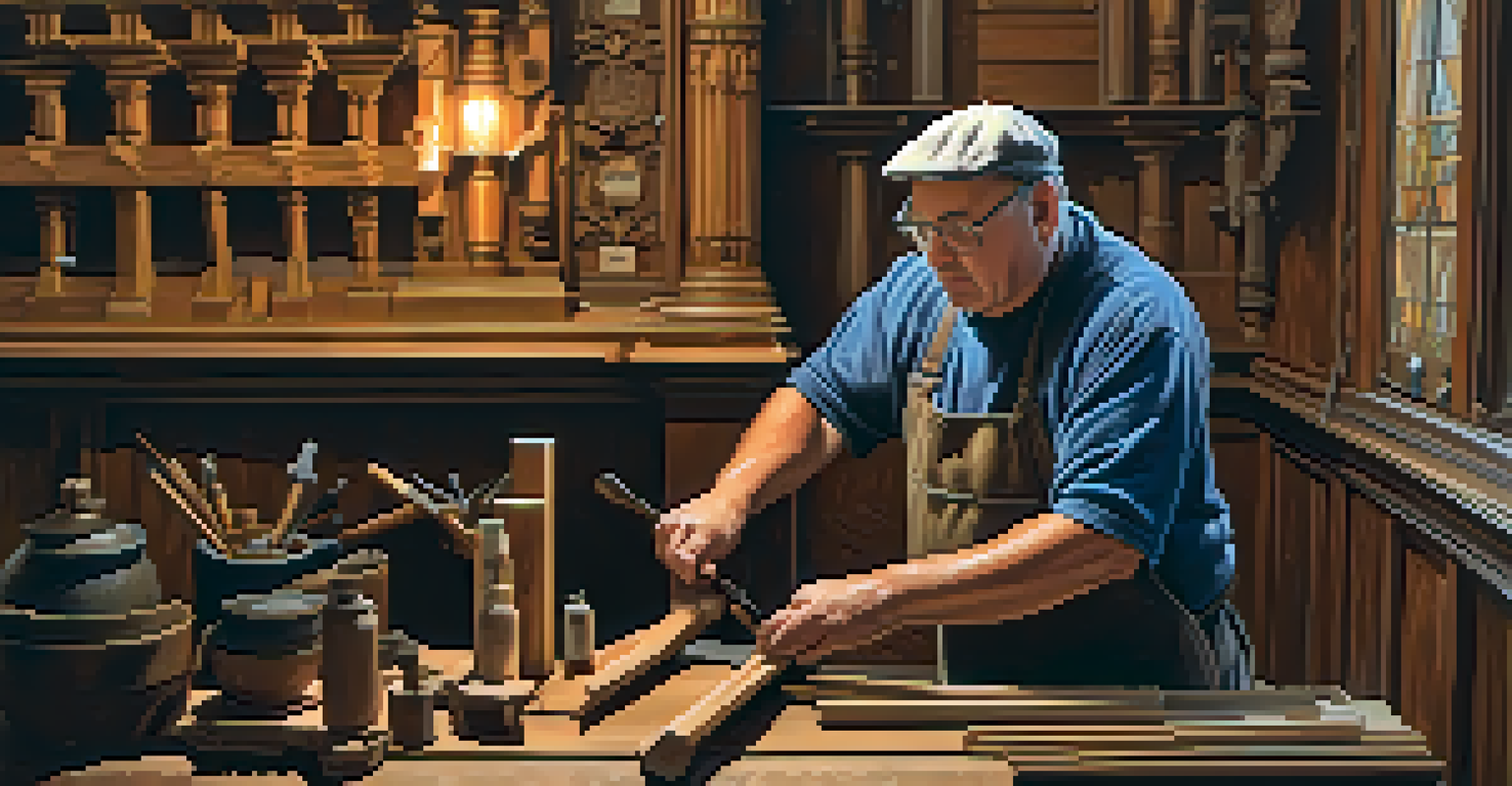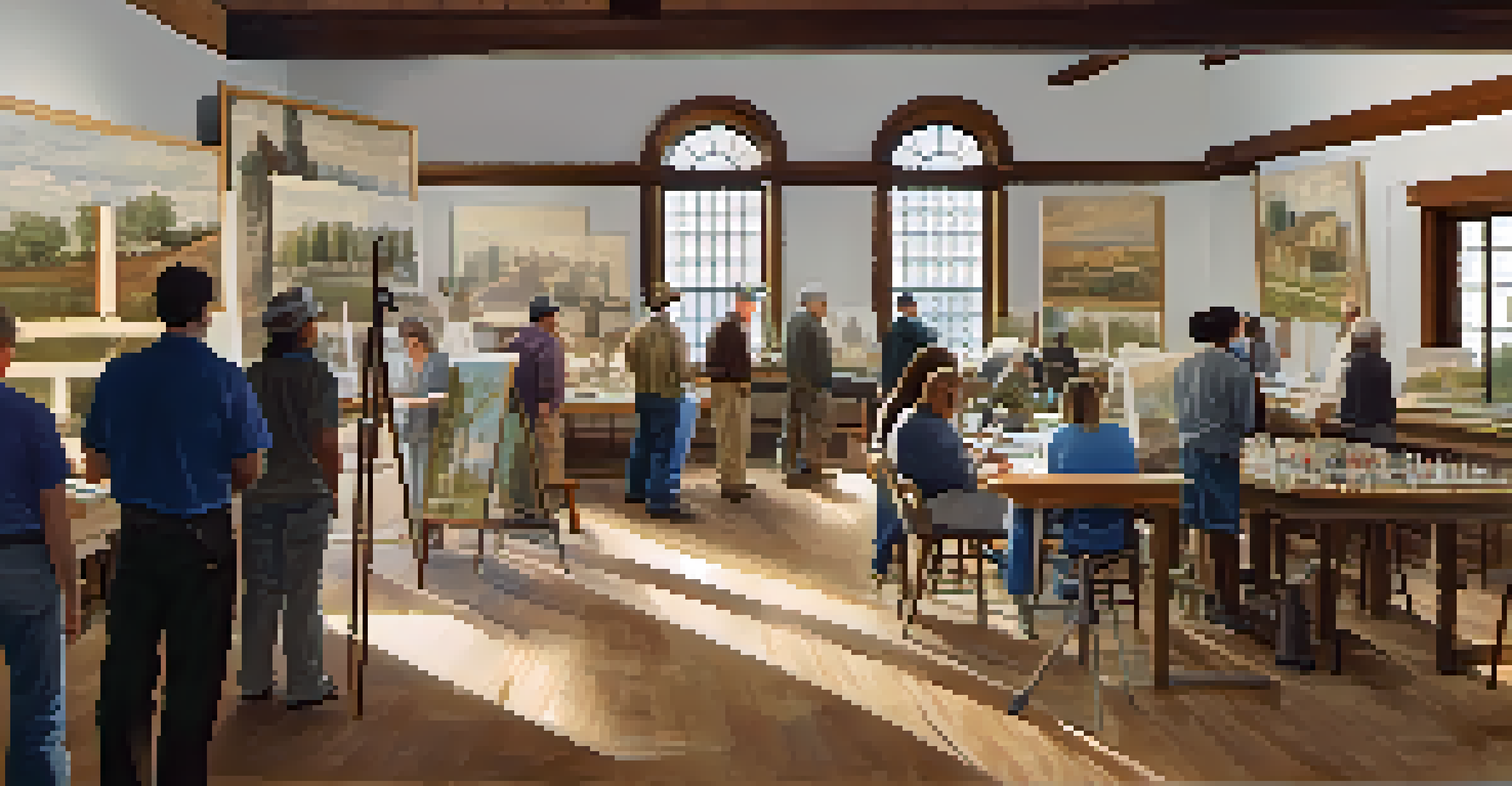How to Preserve the Integrity of Historic Interior Spaces

Understanding the Importance of Historic Preservation
Historic preservation is crucial for maintaining our cultural heritage. It allows future generations to experience and appreciate the beauty and craftsmanship of the past. By preserving historic interiors, we not only save unique architecture but also protect stories that define our communities.
Preservation is a form of courage, the courage to face the past and the future at the same time.
Preserving these spaces goes beyond aesthetics; it's about honoring the history and significance behind them. Consider how each detail, from ornate moldings to original wallpaper, tells a tale of the era it represents. When we safeguard these features, we contribute to a living history that enriches our lives.
Moreover, preserving historic interiors can enhance property values and attract tourism. Well-maintained historic buildings draw visitors who are eager to explore our shared past, fostering economic growth while instilling pride in local heritage.
Assessing the Current Condition of Interior Spaces
Before diving into preservation efforts, it's essential to assess the current condition of the interior space. This can involve a thorough inspection of structural elements, finishes, and any previous renovations. Understanding what exists helps in determining what needs repair or restoration.

Look for signs of wear and tear, such as cracked plaster, water damage, or outdated electrical systems. Taking inventory of these elements ensures that you prioritize the most urgent issues first. Documenting these findings can also guide your preservation plan effectively.
Preservation Enriches Community Heritage
Historic preservation not only maintains cultural heritage but also enhances property values and fosters local pride.
Engaging professionals, like architects or conservators, can provide invaluable insights during this assessment phase. Their expertise will help identify materials that can be restored or replaced, ensuring that any work aligns with historical accuracy.
Researching Historical Context and Original Features
To preserve the integrity of historic interiors, understanding their historical context is vital. Researching the building's history helps uncover original design elements and materials used. This knowledge can guide your restoration efforts and ensure authenticity.
Historic preservation is not just about saving old buildings; it is about saving our stories, our culture, and our identity.
Utilize local archives, historical societies, or even online databases to gather information about the interior's original features. Photographs, blueprints, and written accounts from previous occupants can provide critical insights into what elements should be maintained or restored.
This research process can also uncover fascinating stories that enrich the preservation project. For example, learning about a room’s original purpose might inspire design choices that reflect its historical use, creating a seamless blend of past and present.
Choosing Appropriate Restoration Techniques and Materials
When restoring historic interiors, it's essential to choose techniques and materials that reflect the original craftsmanship. This often involves sourcing materials that match the historic ones in color, texture, and composition. Using the wrong materials can compromise the overall integrity of the space.
For example, if you're restoring original woodwork, opt for traditional finishes that mimic the original patina rather than modern alternatives. This attention to detail ensures that the interior maintains its historical character while remaining functional.
Assess Condition Before Restoration
Thoroughly assessing the current condition of historic interiors is essential to prioritize repairs and ensure accurate restoration.
Additionally, consider consulting with artisans who specialize in historic restoration. Their skills and expertise in traditional methods can make a significant difference in achieving a preservation that honors the building's legacy.
Implementing Modern Technology in Preservation Efforts
While preserving historic interiors focuses on the past, modern technology can play an essential role. Innovations like 3D scanning and digital modeling can help document the current state of the interior and guide restoration efforts. These technologies can ensure that any changes respect the building's historical integrity.
Moreover, energy-efficient systems can be integrated into historic spaces without compromising their aesthetics. For instance, installing discreet climate control systems can help maintain comfortable temperatures while protecting original materials from damage.
Using technology wisely allows for a balance between preservation and modern convenience. This approach not only enhances the functionality of historic interiors but also ensures they remain relevant and usable in today's world.
Creating a Maintenance Plan for Ongoing Care
Once restoration is complete, creating a maintenance plan is crucial for preserving historic interiors. Regular upkeep helps prevent deterioration and keeps the space looking its best. A well-thought-out maintenance schedule can save time and money in the long run.
Identify key areas that require periodic attention, such as cleaning, inspections, and minor repairs. Establishing a routine will ensure that any issues are caught early, preventing more significant problems down the line. Documenting these activities can also contribute to the building's history.
Educate for Future Preservation Efforts
Engaging the community through education about historic preservation helps inspire appreciation and involvement in maintaining these spaces.
Engaging the community in maintenance efforts can foster a sense of ownership and pride. Organizing volunteer days or educational workshops can involve local residents in the preservation journey, creating a lasting connection between the community and its historic spaces.
Educating Others About the Importance of Preservation
Education plays a vital role in historic preservation. Sharing knowledge about the significance of preserving interior spaces can inspire others to appreciate and get involved in these efforts. Engage your community through workshops, tours, or social media to spread awareness.
Highlighting the stories behind historic interiors can evoke emotional connections. When people understand the history and craftsmanship involved, they are more likely to support preservation initiatives. Use storytelling to showcase the value of these spaces, making history relatable and engaging.

Furthermore, collaborating with local schools and organizations can enhance educational outreach. By fostering an appreciation for historic preservation in younger generations, we ensure that these efforts continue well into the future.